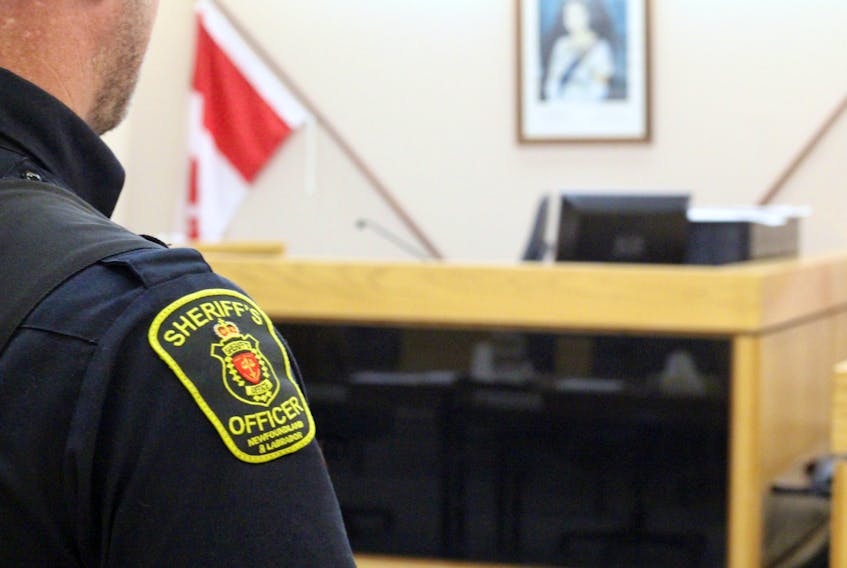ST. JOHN'S, N.L. - “You’d get more of a punishment if you poached a moose!”
It’s an oft-expressed response from the public when it comes to the sentences given to offenders in our provincial and supreme courts, particularly when it comes to violent crimes, and judges are often called upon to impose tougher consequences for criminal behaviour.
Read on for some facts about sentencing in our justice system, and how the courts determine what’s appropriate.

• The Criminal Code of Canada sets out maximum and, in some cases, minimum sentences that can be imposed for any offence.
The Crown can’t request and the judge can’t impose whatever sentence they personally feel is appropriate, since they are bound by the limits of sentencing in the criminal code. The same is true for other provincial offences, say, under the Highway Traffic Act or the Wildlife Act. Government can decide to amend the criminal code and change the maximums and minimums, as it has with impaired driving and sexual assault, if the public calls for it.
A number of mandatory minimum sentences — including those for possessing a loaded, prohibited firearm and for sexual assault — have been ruled unconstitutional on the grounds that in some circumstances they could be disproportionate or amount to cruel and unusual punishment. In those cases, the court can still impose those minimums — or higher — but are not compelled to impose it.
• Sentencing is also limited by previous similar cases.
By law, the court must apply a sentence similar to what others have received for the same offence. Before suggesting a particular sentence in a case, Crown and defence lawyers must research similar Canadian cases and present them to the judge. The Crown will urge the judge to find the case before them is similar to ones in which a higher sentence was imposed; the defence will do the opposite. The judge will then assess the facts and the prior cases and come to a determination. If the judge chooses to ignore precedent and imposes a sentence that’s significantly higher or lower, he or she must give a very good reason for doing so.
“Otherwise, the case would almost certainly be appealed, and the appeal court would simply replace the trial judge’s sentence with one which corresponds with precedent,” explains Lloyd Strickland, Newfoundland and Labrador’s assistant director of public prosecutions.
• Youth sentences are less severe than adult sentences for the same crimes.
The Criminal Youth Justice Act, which applies to offenders aged 12 to 17, recognizes children have a diminished responsibility for their actions. General deterrence - sending a message to the public that certain crimes will not be tolerated and should receive heavier sentences - cannot be a sentencing factor in youth cases, by law.
• Punishment is not the main purpose of sentencing in Canada.
Public protection is. The criminal code recognizes that the public may be best protected by an offender turning their life around and becoming a productive member of society. There are other objectives of sentencing, including deterrence (both of the person and the public), promoting a sense of responsibility in the offender, denunciation of the offence and repairing harm done to the victim and community, but the goal is not to exact revenge or retribution, and the law says jail should not be imposed if other, less restrictive sanctions would be appropriate.
“Really, jail should be reserved for people who pose a risk to society,” explains Rose Ricciardelli, criminologist, researcher and MUN professor. “The punishment isn’t going to jail. The punishment is taking a person away from their life. It’s that removal from society so they can get themselves to the point where they can function as a viable member of it.”
If someone can do that while still serving society, say, by living under house arrest for a period of time while still contributing to the economy by working, that must be taken into consideration, Ricciardelli says.
“When we incarcerate a person, it’s because they can’t serve society without harming someone,” she explains, adding research has shown that harsher consequences don’t deter crime.

• A person convicted of multiple offences at the same time will often have their sentence reduced for totality.
In a nutshell: the courts must try to avoid any sentence that would be disproportionately long for the criminal acts in question and would therefore affect an offender’s prospect of turning their life around.
“Imagine an individual is convicted of five armed robberies,” Strickland presents as an example. “Each armed robbery may attract a sentence of three years in prison. Since an offender is generally supposed to receive a sentence for each offence he or she committed, the end result would be 15 years imprisonment. I appreciate that there are many such an offender who deserves that time in jail. But a sentence that long might extinguish any possibility that the offender ever becomes a functioning, contributing member of society, so the sentencing judge will reduce the overall sentence imposed to leave open the possibility that this offender will change and rehabilitate.”
• Will poaching a moose or fishing out of season fetch a person a harsher sentence than a violent crime?
Not usually. But there are some things considered. Is the thought of possibly going to jail going to stop someone from committing a violent assault? Unfortunately, maybe not, since it’s a often a heat-of-the-moment crime. That’s not to downplay the fact that it’s serious and criminal, Strickland points out.
“When a legislature determines a sentencing range for poaching, it does so knowing the illegal acts are not committed in the moment, but involve some degree of contemplation,” he says. “The sentence range chosen is intended to make the person stop and think before pulling the trigger or casting a net, whatever the case may be.”
Another example is environmental offences, Strickland says. Government sets the sentencing range knowing potential offenders have large resources and enormous penalties are therefore required to achieve deterrence.
“A potential polluter will consider the costs of a fine, for instance, versus savings in terms of having to treat or store the pollutant,” Strickland explains.









